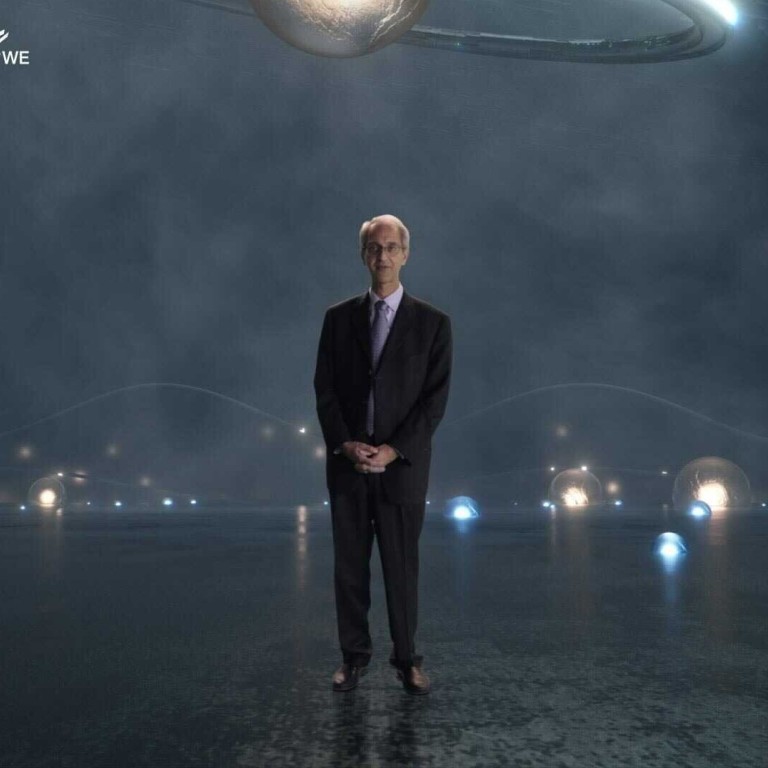
From brain to screen: a scientist is ready to directly turn what you think into words
- A new method created by a team of Stanford University researchers allows a patient to type with record-breaking speed using only his brain
- Brain-computer interface technology has gained public attention after Elon Musk’s Neuralink released video of a monkey playing video games with its mind
A breakthrough in brain-computer interface (BCI) has enabled a man with paralysed hands to type 90 characters a minute just by thinking about the words, making him the world’s fastest mind-typist using that brain-reading technology, according to researchers from Stanford University.
Their study, published in Nature in May and presented at WE Summit, a science conference hosted by Tencent Holdings online on Saturday, enabled the patient to achieve a typing speed twice as fast as people who relied on an older type of BCI technology, which let users type by using their mind to move a cursor to the desired character on a virtual keyboard.
“That’s just the tip of the iceberg. When we really understand the brain through neuroscience in the coming decades we should be able to do much better in a wider variety of tasks,” neuroscientist and engineer Krishna Shenoy said at the summit.
Elon Musk’s Neuralink begins brain chip tests on pigs
In Shenoy’s experiment, researchers implanted electrode sensors in the patient’s brain, which recorded the electrical activity of neurons as the patient imagined himself writing with his hand. An artificial intelligence (AI) algorithm was used to decode the signals and display the letters on a computer screen.
The new method, used in conjunction with an AI-powered language system with an autocorrect function, boosted the accuracy rate to 99 per cent, researchers said.
While Shenoy said that 15 years of experiments by his research team has proved that the surgical implantation method they use is safe, public perception will continue to be one of the major roadblocks to mass market adoption of BCI technology.
To make commercialisation possible, scientists will also need to safely insert more electrodes in the brain. The brain has about 86 billion neurons, but scientists are currently only able to record signals from less than a few thousand of them, Shenoy said.
Still, the biggest challenge would be to find a viable business model for the technology, since neurosurgery is expensive.
“[It is] maybe the trickiest of all [challenges],” Shenoy said. “That’s where it takes very special people to really focus on these problems and invest their money and that’s where, for example, Elon Musk and Neuralink are really making a huge impact because they are making it possible for many companies to receive funding [by showing] how important this area is.”
Elon Musk’s Neuralink gets monkey to play video game with its mind
Scientists have been experimenting for years on ways to allow people to control computers or robotic arms just by using their brain, without having to move their lips or fingers. BCI technology, an idea that used to sound like science fiction, has gained increasing attention from the general public in recent years, especially after Neuralink, a company founded by US tech tycoon Elon Musk, released a video in April showing a monkey playing a video game with its mind.
In China, Shanghai’s Ruijin Hospital announced a therapy project last year to use neuromodulation treatment for depressed patients by implanting electrode chips in their brains. Chinese video game tycoon and tech investor Chen Tianqiao has set up the Brain Frontier Lab to study brain signals of rats to devise future neural treatments for humans.
Despite the recent hype around BCI technology, Shenoy said we are unlikely to be communicating telepathically any time soon.
“At present, most work is focused on restoring lost movement and communication ability, not on ‘telepathy’ or other more science fiction type efforts,” he said.
With deeper understanding on how the brain works, however, “we can think creatively about helping people with a wide range of disabilities”, said Shenoy in an online chat with reporters.
Elon Musk’s Neuralink is exciting and terrifying to people in China
The WE Summit, launched in 2013 as an annual event for researchers to share their findings with the public, has hosted 80 scientists over the years, including the late theoretical physicist Stephen Hawking.
Talks by scientists at the forefront of their field, such as Shenoy, are part of Tencent’s efforts to promote science. In 2018, the gaming and social media giant set up a 1 billion yuan (US$156 million) fund to award 50 young researchers in fundamental sciences each year. Earlier this year, in response to Beijing’s call for common prosperity, the Shenzhen-based company vowed to spend 100 billion yuan in social responsibility initiatives ranging from basic science research to poverty alleviation.

